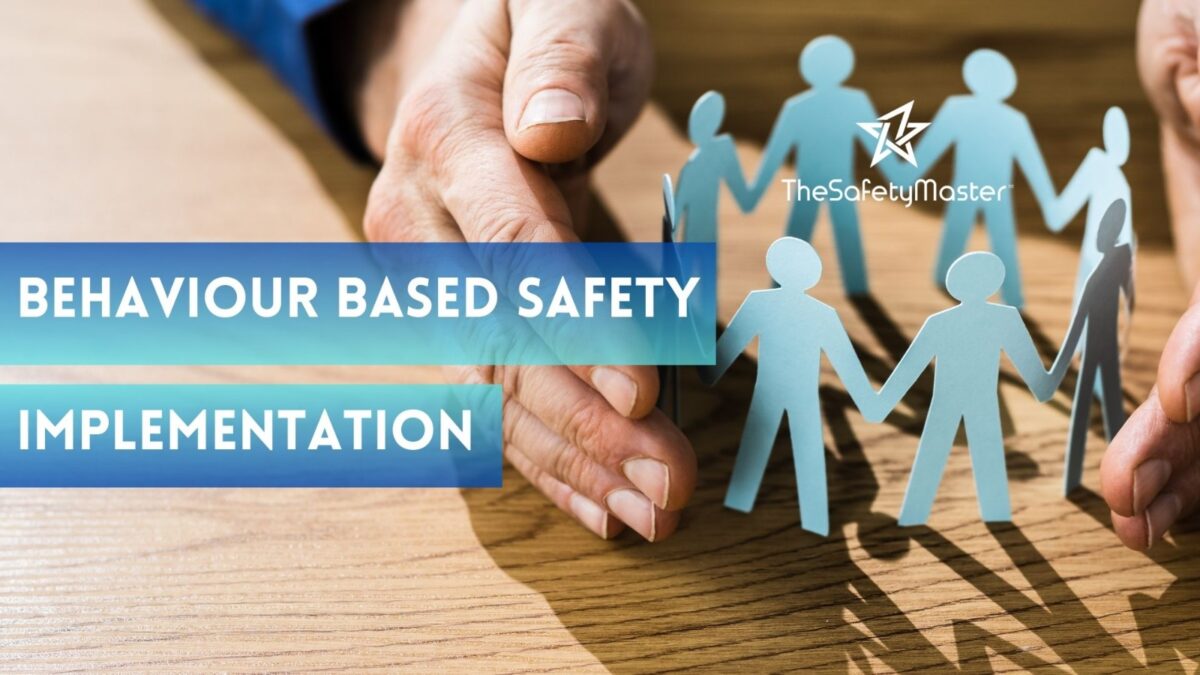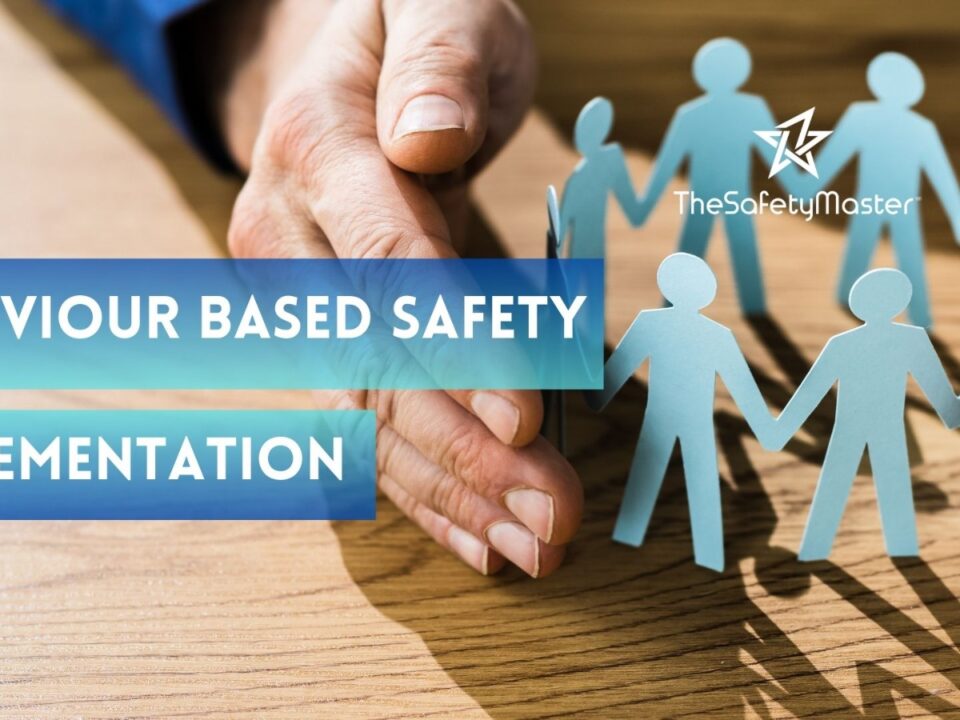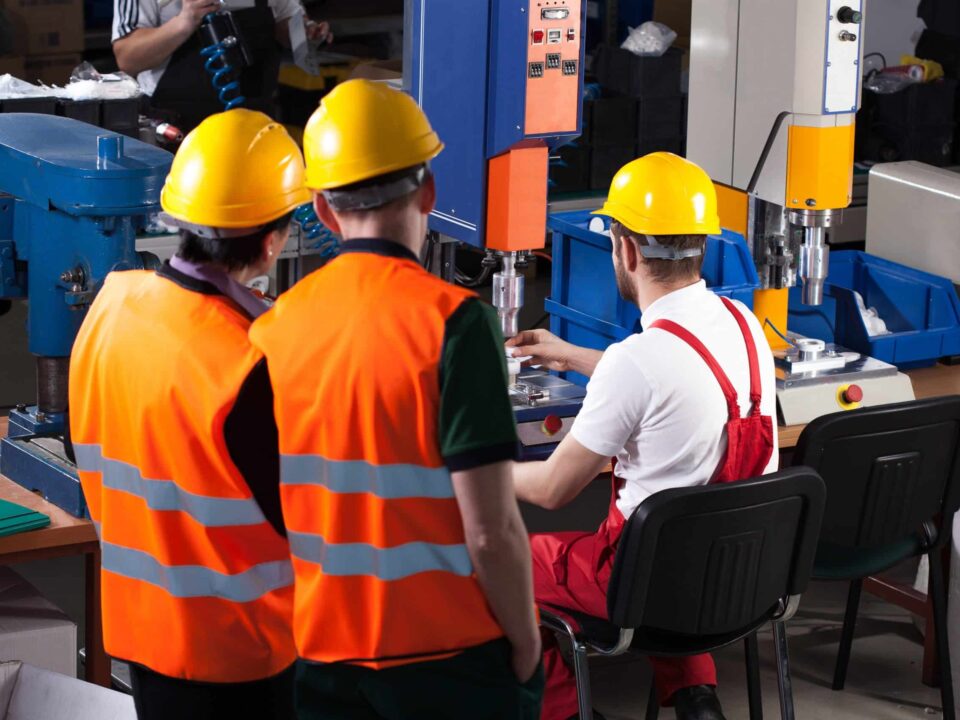The Power of Positive Reinforcement: Transforming Workplace Culture through Behaviour Enhancement

The Importance of Safety Record-Keeping
October 11, 2025
Comprehensive Guide to Conducting Laboratory Safety Audit: Best Practices and Common Pitfalls
October 13, 2025In this article, we delve deep into the core of workplace cultures, shedding light on a pervasive problem that often goes unnoticed: the lack of positive reinforcement. As organizations strive for growth and success, it becomes paramount to examine the impact of behaviour enhancement strategies. Join us as we explore the power of positive reinforcement in transforming workplace dynamics, fostering employee engagement, and ultimately driving a culture of excellence. Expect insightful analysis, practical tips, and real-life examples that will inspire and guide you in revolutionizing your own work environment. Unleash the potential that lies within your organization and unlock a brighter tomorrow.
Introduction
In today’s fast-paced and competitive work environments, organizations are constantly seeking ways to foster a positive and productive workplace culture. One of the most effective methods for achieving this is through the power of positive reinforcement. By understanding how to enhance behaviours and create a feedback loop that promotes growth and development, companies can transform their workplace culture into one that is supportive, engaging, and motivating. In this article, we will delve into the intriguing world of positive reinforcement and explore its profound impact on shaping workplace dynamics. We will uncover strategies for implementing positive reinforcement techniques that not only recognize employee efforts but also enhance team collaboration. Furthermore, we will examine how positive reinforcement can bolster employee motivation and contribute to organizational success as a whole
The Importance of Workplace Culture
The workplace culture forms the very backbone of any organization, acting as a catalyst for productivity, employee satisfaction, and overall success. It encompasses the shared values, beliefs, attitudes, and behaviours that shape the work environment. Just like a fertile garden nurtures thriving plants, a positive workplace culture fosters employee engagement and well-being. A positive workplace culture goes beyond mere policies and procedures; it is an intangible force that permeates every aspect of an organization. It sets the stage for innovation and creativity to flourish, creating an atmosphere where individuals feel valued, motivated, and inspired to give their best. In such an environment, collaboration thrives as teams work cohesively towards common goals while supporting one another’s growth.
When employees feel a sense of belonging and purpose within their workplace culture, they are more likely to feel happy coming to work each day. The positive energy that emanates from such an environment cultivates optimism and enthusiasm among employees. This can lead to increased job satisfaction levels and ultimately translates into higher levels of productivity. A strong workplace culture acts as a magnet for top talent seeking organizations that value their employees’ well-being.
In summary, understanding the importance of workplace culture is crucial as it lays the foundation for organizational success. By cultivating a positive work environment where individuals feel valued and supported in their endeavours, organizations can create a harmonious atmosphere that nurtures productivity and fosters employee growth. The power of a strong workplace culture should never be underestimated; it has the potential to transform organizations into thriving hubs of positivity and achievement.
Understanding Positive Reinforcement
Within the boundless realm of workplace dynamics, the concept of positive reinforcement stands tall, illuminating the path towards a harmonious and thriving organizational culture. Positive reinforcement is a powerful tool rooted in behavioural psychology that seeks to increase desired behaviours through the application of rewards and recognition. By understanding the intricacies of this psychological phenomenon, leaders can unleash its transformative potential within their organizations. At its core, positive reinforcement hinges upon the principle that when a behaviour is followed by a rewarding stimulus, an individual is more likely to repeat that behaviour in the future. This process encompasses both external rewards, such as bonuses or public recognition, and internal rewards, such as personal satisfaction or a sense of accomplishment. The beauty lies in its simplicity: positive reinforcement nurtures a sense of optimism and possibility within employees’ minds, fuelling their motivation to achieve greater heights.
When individuals receive positive feedback for their efforts and contributions in the workplace, they experience an uplifting surge in morale and self-confidence. This creates an environment where employees feel valued, appreciated, and supported in their professional endeavours. Through this lens of positivity and genuine acknowledgement for achievements – no matter how small – employees are empowered to reach their full potential while fostering an atmosphere conducive to growth and collaboration.
By embracing the power of positive reinforcement within organizations, leaders have the opportunity to cultivate an environment that not only celebrates accomplishments but also nurtures individuals’ development as they embark on a gratifying journey towards excellence. The ripple effect becomes evident; teams become more engaged and cohesive, productivity soars amidst heightened motivation levels, and employee satisfaction becomes an indomitable force propelling progress forward
The Role of Behaviour Enhancement
The Role of Behaviour Enhancement: In the realm of workplace culture, behaviour enhancement plays a pivotal role in fostering a positive and productive environment. By focusing on improving employee behaviours through positive reinforcement, organizations can cultivate a harmonious atmosphere that promotes growth and success. Behaviour enhancement involves identifying desirable behaviours, such as teamwork, creativity, and initiative, and implementing strategies to encourage their development.
One effective technique in behaviour enhancement is providing clear expectations to employees. By outlining specific goals and desired behaviours, individuals are empowered to work towards achieving them. This clarity helps in setting a benchmark for performance and creates a sense of purpose among team members. Furthermore, by aligning these expectations with the overall mission of the organization, employees become motivated to contribute positively towards its success.
Another crucial aspect of behaviour enhancement is continuous feedback. Regularly acknowledging employee efforts and providing constructive feedback serves as an important catalyst for growth and improvement. This feedback should be specific, highlighting the desired behaviours exhibited by individuals or teams. By recognizing their contributions openly and sincerely, organizations create an environment where employees feel valued and motivated to continue demonstrating those desirable behaviours.
Ultimately, behaviour enhancement plays a vital role in transforming workplace culture by promoting behavioural excellence among employees. Through clear expectations and regular feedback mechanisms, organizations can foster a positive atmosphere built on trust, collaboration, and continuous improvement. When people feel supported in their efforts to exhibit positive behaviours aligned with organizational values, it creates an ecosystem where success becomes inevitable – not just for individuals but for the organization as a whole
Creating a Positive Feedback Loop:
Within the realm of workplace culture, establishing a positive feedback loop is essential for fostering growth and development among employees. By creating an ecosystem of continuous reinforcement, organizations can unlock the potential for individuals to thrive. Imagine a workplace where recognition and appreciation are not mere tokens but genuine acts that fuel motivation and inspire further accomplishments. A crucial aspect of building this positive feedback loop is providing timely and specific feedback. When employees receive constructive comments promptly after their achievements, it reinforces their belief in their capabilities and fuels their desire to excel further. Picture an environment where managers take the time to acknowledge even small wins, encouraging the notion that every effort counts towards a collective success.
Moreover, fostering open communication channels is pivotal in maintaining a positive feedback loop. Encouraging employees to share their ideas, concerns, and challenges creates an atmosphere of trust and transparency. A workplace where colleagues engage in meaningful dialogue, providing each other with sincere feedback without fear of retribution or judgment, leads to enhanced collaboration and productivity. In such an environment, everyone feels valued for their contributions, promoting unity among team members.
Implementing Positive Reinforcement Strategies
Implementing Positive Reinforcement Strategies: In the pursuit of transforming workplace culture, implementing effective positive reinforcement strategies is paramount. By recognizing and rewarding employee efforts, organizations can foster a motivational environment that encourages ongoing growth and development. One impactful strategy is the establishment of a comprehensive recognition program that celebrates individual and team achievements. This can include monthly awards, public recognition during team meetings, or even creating a designated wall of fame to showcase outstanding contributions. Such initiatives not only provide a platform for employees to be acknowledged but also inspire others to emulate their success.
Another powerful strategy is providing meaningful feedback tailored to each employee’s specific strengths and areas for improvement. Regular one-on-one conversations with managers allow for personalized recognition of accomplishments and constructive guidance on how to enhance performance further. By focusing on strengths rather than solely pointing out weaknesses, these conversations build trust, confidence, and enthusiasm within the workforce. Furthermore, incorporating peer-to-peer recognition programs ensures that positive reinforcement becomes an integral part of the workplace culture itself. Encouraging employees to appreciate one another’s efforts reinforces teamwork and creates a supportive atmosphere where everyone feels valued.
To bolster the impact of positive reinforcement strategies, it is vital to link them directly with organizational goals and values. By aligning recognition programs with objectives such as increased productivity or enhanced customer satisfaction, employees perceive their efforts as contributing directly to the success of the organization as a whole. Emphasizing how individual achievements are intertwined with collective goals fosters a sense of purpose and pride in one’s work. Additionally, integrating these strategies into regular performance evaluations serves as a constant reminder that positive behaviour is not only appreciated but actively recognized by management
Recognizing and Rewarding Employee Efforts
Recognizing and Rewarding Employee Efforts: In the dynamic realm of the workplace, acknowledging the diligent efforts of employees holds immense significance. By recognizing their contributions, we not only foster a positive connection between employer and employee but also create an environment that encourages continued dedication. A simple word of appreciation or a heartfelt thank you can go a long way in uplifting spirits and boosting morale. It is crucial for leaders to actively seek out opportunities to commend their team members for their exceptional work.
Weaving a tapestry of recognition requires more than just words; tangible rewards can reinforce the notion that hard work does not go unnoticed. This could be in the form of bonuses, gift certificates, or even symbolic tokens such as trophies or plaques. The act of presenting these rewards publicly adds an extra layer of significance, highlighting exemplary achievements while inspiring others to strive for greatness. Such gestures resonate deeply with employees, fostering loyalty and a sense of belonging within the organization.
Moreover, personalized recognition tailored to individual strengths and preferences generates an impact that is not easily forgotten. Taking the time to understand what motivates each employee allows leaders to craft meaningful rewards that resonate on a personal level. Whether it’s granting additional responsibilities, offering professional development opportunities, or implementing flexible work arrangements, these tailored acknowledgments demonstrate genuine care for an employee’s growth and well-being.
By recognizing and rewarding employee efforts consistently and thoughtfully, organizations can cultivate a culture where individuals feel valued and motivated to excel. This virtuous cycle drives productivity levels upwards while nurturing an atmosphere characterized by camaraderie and shared success
Enhancing Team Collaboration through Positive Reinforcement
Enhancing Team Collaboration through Positive Reinforcement: Creating a harmonious and collaborative work environment is crucial for the success of any organization. Positive reinforcement can play a pivotal role in fostering team collaboration and encouraging cohesive interactions among employees. By implementing effective strategies, employers can cultivate a supportive culture that values cooperation, creativity, and shared achievements.
One way to enhance team collaboration is by promoting open communication channels. Encouraging employees to express their ideas, concerns, and suggestions demonstrates that their input is valued and contributes to the overall growth of the team. Positive reinforcement can be used to recognize individuals who actively contribute to discussions, ensuring that everyone feels heard and appreciated.
Furthermore, establishing teamwork as a core value within an organization sets the stage for collaborative efforts. By recognizing successful team initiatives through positive reinforcement methods such as public acknowledgments or rewards, employees are motivated to work together towards shared goals. This not only fosters a sense of camaraderie but also maximizes productivity as individuals feel empowered within their teams.
In essence, by harnessing the power of positive reinforcement to enhance team collaboration, organizations can create an environment where synergy flourishes and collective achievements become the norm. Through consistent recognition and support for cooperative efforts, employees are inspired to go above and beyond in working together towards shared success stories.
Impact of Positive Reinforcement on Employee Motivation
The Impact of Positive Reinforcement on Employee Motivation: Positive reinforcement plays a substantial role in boosting employee motivation within the workplace. When employees are consistently recognized and rewarded for their efforts, it fosters a sense of accomplishment and purpose. This leads to increased job satisfaction and a deeper commitment to achieving organizational goals.
By implementing an effective positive reinforcement strategy, employers can create an environment where employees feel valued and appreciated for their contributions. This, in turn, enhances their intrinsic motivation, driving them to excel in their roles. Whether it is through verbal praise, monetary incentives, or public recognition, positive reinforcement acts as a catalyst for employee growth and continuous improvement.
Moreover, the impact of positive reinforcement extends beyond individual motivation; it also cultivates a positive team dynamic. When team members witness their colleagues being acknowledged and rewarded for their achievements, it inspires a sense of camaraderie and encourages collaboration. This synergy breeds creativity and innovation as employees feel empowered to share ideas without fear of judgment or competition.
In summary, the power of positive reinforcement on employee motivation cannot be overstated. Its ability to elevate job satisfaction, foster intrinsic motivation, boost teamwork, and drive success highlights its significance in transforming workplace culture into one that thrives on encouragement and mutual support. By embracing this approach within organizations, employers can cultivate an atmosphere that not only brings out the best in individuals but also fosters collective achievement.
Measuring the Success of Positive Reinforcement
Measuring the Success of Positive Reinforcement: Through well-designed measurement techniques, organizations can effectively assess the impact of positive reinforcement on workplace culture. One such method is conducting regular employee surveys to gauge their perception of the organization’s efforts in promoting a positive work environment. By asking questions related to recognition, rewards, and overall satisfaction, these surveys provide valuable insights into the effectiveness of positive reinforcement strategies.
Additionally, quantitative data analysis can be employed to assess key performance indicators (KPIs) before and after implementing positive reinforcement initiatives. This allows organizations to track improvements in employee productivity, engagement levels, and job satisfaction. For instance, comparing sales figures or project completion rates before and after implementing a rewards program can provide tangible evidence of positive reinforcement’s success.
Furthermore, qualitative feedback from employees should not be overlooked. Conducting focus groups or interviews with staff members enables organizations to gain deeper insights into the direct impact of positive reinforcement on individual behaviours and attitudes towards work. Hearing first-hand accounts of how recognition and rewards have motivated employees can inspire others to embrace a more positive mind-set.
Ultimately, measuring the success of positive reinforcement involves combining both quantitative and qualitative methods to obtain a comprehensive understanding of its impact on workplace culture. By collecting data consistently over time and using this information as a basis for continuous improvement, organizations can foster an environment where positivity thrives and individuals feel valued for their contributions.
Overcoming Potential Challenges
As we delve into the realm of positive reinforcement and its profound impact on workplace culture, it is crucial to acknowledge the potential challenges that may arise during its implementation. One such challenge lies in identifying suitable rewards for employees with diverse preferences and motivations. Each person is unique, and what may be motivating for one individual might not hold the same inspirational power for another. Another hurdle to consider is maintaining consistency in applying positive reinforcement strategies throughout an organization. Ensuring that all managers and supervisors consistently provide feedback and rewards can be a daunting task, especially in larger companies with multiple departments or branches. It requires clear communication, training programs, and establishing a culture of appreciation at every level.
Moreover, measuring the success of positive reinforcement can pose a challenge as it is often intangible in nature. While tangible metrics such as increased productivity or reduced employee turnover can give some indication of success, capturing the overarching impact on employee motivation and engagement requires more nuanced evaluation methods. Employers may need to invest in surveys, focus groups, or anonymous feedback systems to truly gauge the effectiveness of their efforts.
Despite these challenges, remember that overcoming obstacles can lead to significant growth opportunities for both individuals and organizations. By embracing these difficulties head-on with determination and creativity, companies can pave the way for a workplace culture rooted in positivity where employees feel valued, motivated, and empowered to reach their full potential.
Conclusion
In the grand tapestry of a workplace, the threads of positive reinforcement weave a transformative culture that nurtures growth and fosters success. By embracing the power of behaviour enhancement, organizations can unlock the true potential of their employees, creating an environment where motivation flourishes and collaboration thrives. As leaders implement strategies that recognize and reward efforts with genuine appreciation, they sow seeds of inspiration that bear fruit in the form of increased productivity, job satisfaction, and ultimately, organizational success. Let us embark on this journey together, radiating positivity to illuminate our collective path toward a brighter future.




